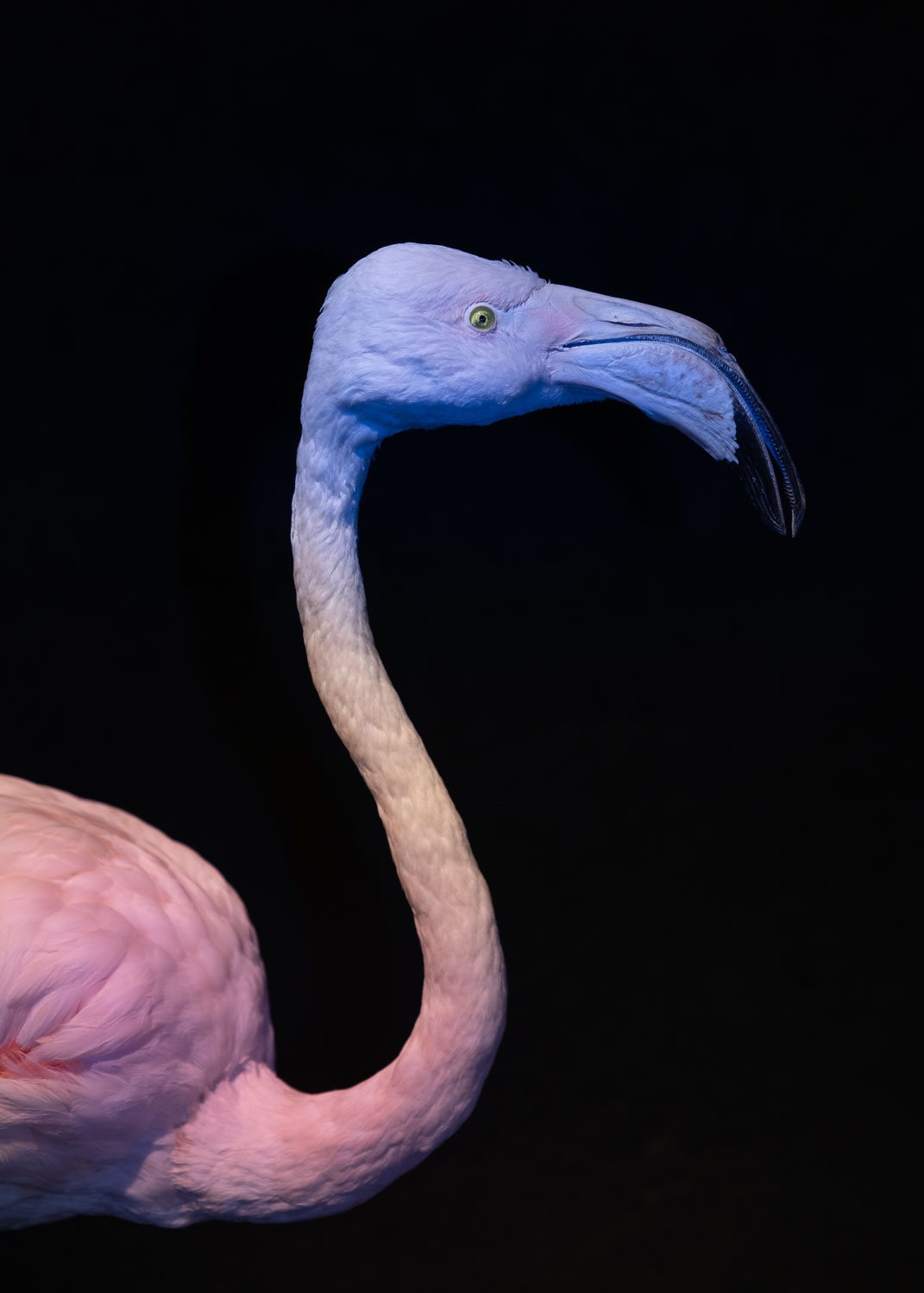
»Vertreibung aus dem Paradies« (Expulsion from Paradise) is a chaos col-
lage that explores the relationship between humans and nature. Nature
serves as a metaphor for paradise, a place where humans desire to live,
yet simultaneously contribute to its destruction. Inspired by experiences
and perceptions from her childhood, Britta Baumann collages a diverse
range of visual elements in this installation.
Britta Baumann (born 1974) is a German conceptual artist based in Wies-
baden and Lisbon. She studied photography at the University of Applied
Sciences and Arts in Dortmund and multimedia art at Belas Artes in
Lisbon. Her works incorporate her photographs, video, text, and „Found
Footage“. She employs various experimental forms to expand the boun-
daries of visual art.
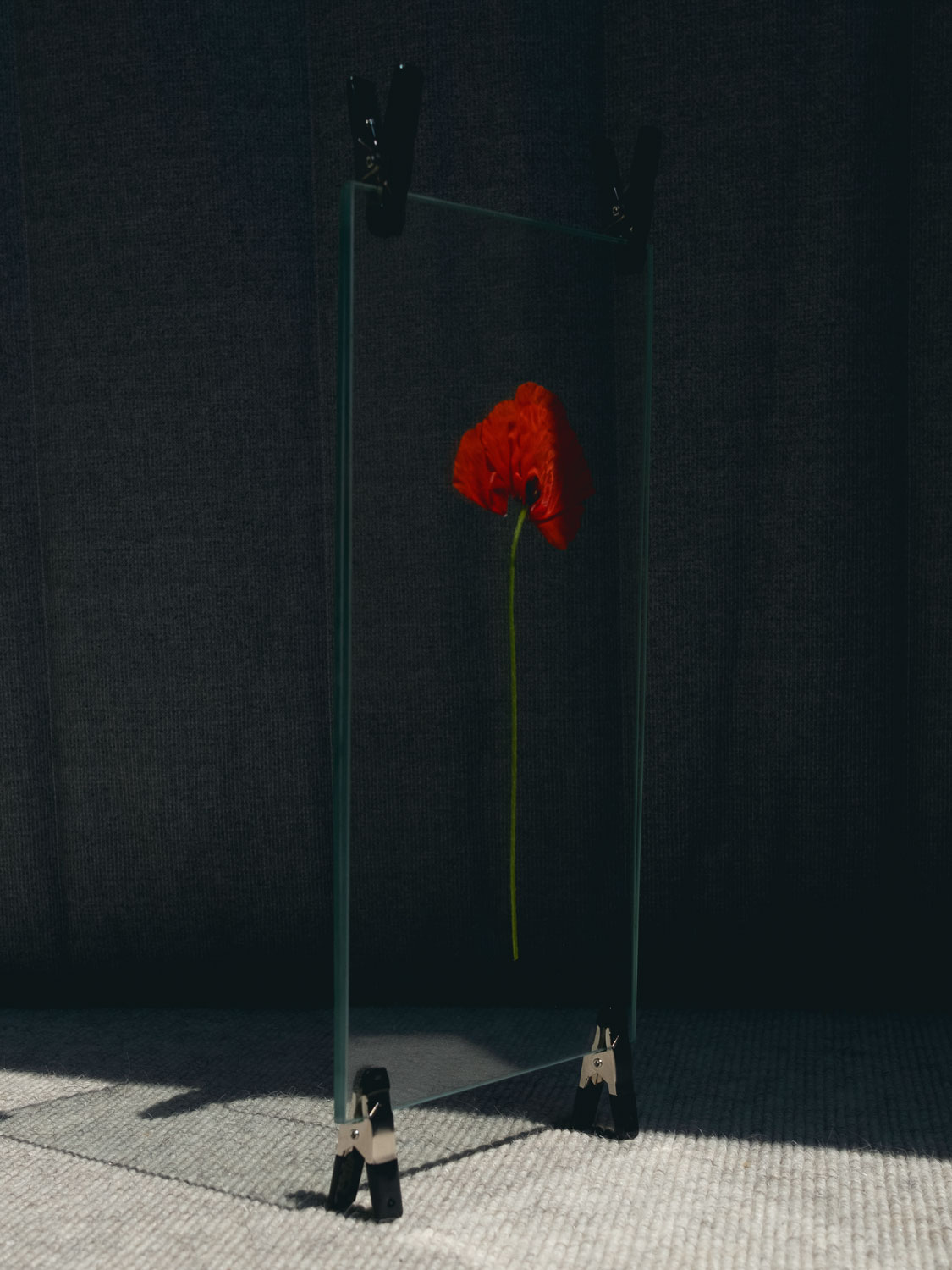
»Jäger und Wolf« (Hunter and Wolf) is the exploration of a fractured
relationship between a father and child. For years, unrelated topics were
discussed by Emma Lydssan‘s father over postcards and small messages.
As incomprehensible as they were to her as a child, they remain so today.
The work questions the physical and immaterial objects that remain from
the relationship, aiming to make the lost tangible.
Emma Lydssan (born 1998) is a photographer and artist. She completed
her BA in Photography at Bielefeld University of Applied Sciences and
Arts in 2021. Additionally, she spent a trimester studying Photography
at the London College of Communication in 2019. Since 2022, she has
been pursuing her MA in Photographic Studies in Dortmund. Her works
primarily focus on personal themes.
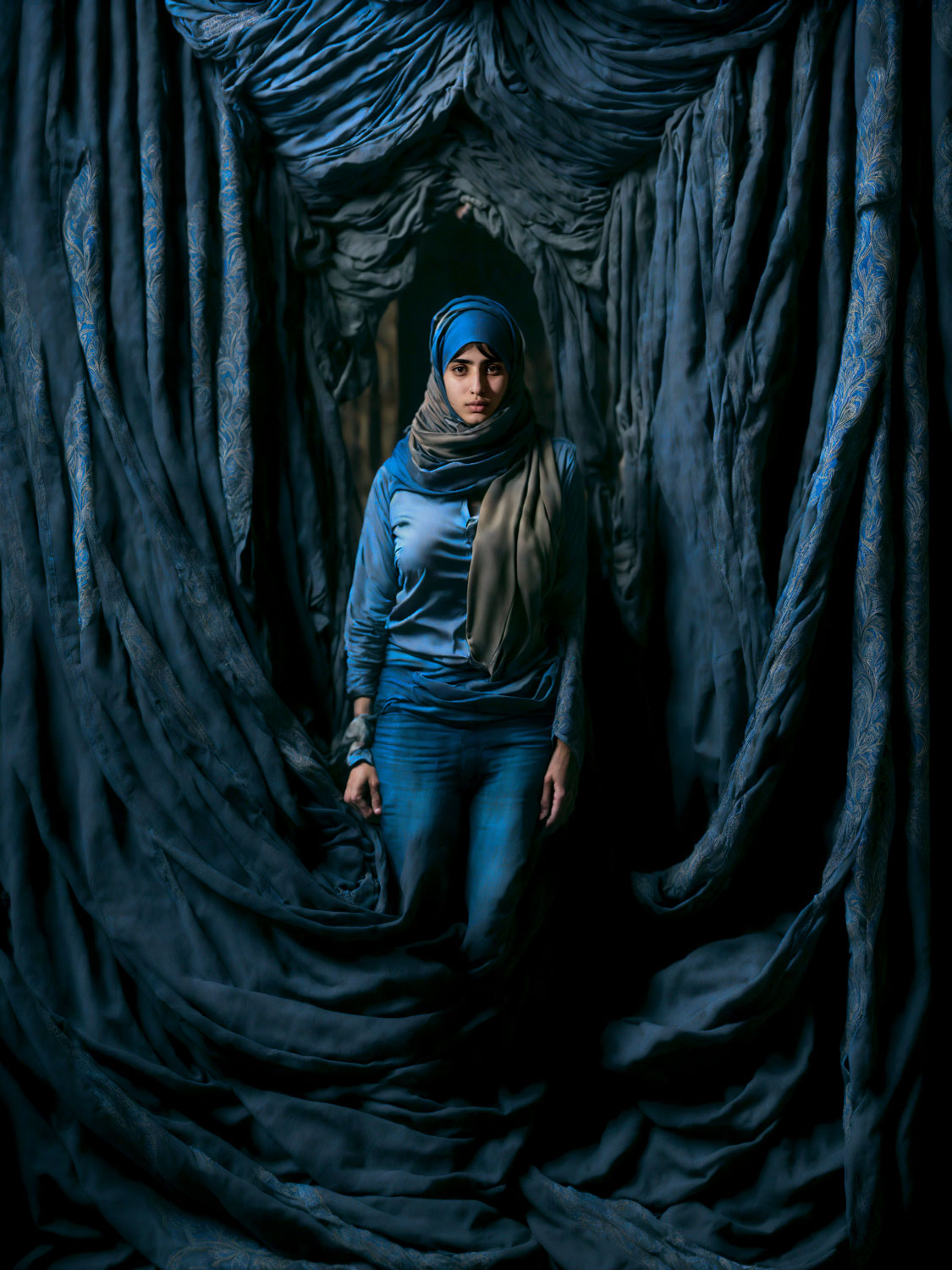
Artists and photographers are using Artificial Intelligence increasingly to
create unique visual worlds that are hardly distinguishable from photo-
graphs. In the work »The Prison«, a fictional Iranian prison with politically
motivated inmates is used as a backdrop. It not only raises questions
about the authenticity of photographs but also enables access to hard-
to-reach groups of people, places, and events. »The Prison« challenges
the dialogue on the use of AI in art, photography, and journalism, inviting
a redefinition of these concepts in the age of artificial intelligence.
Hamon Nasiri Honarvar (born 1983) is a German-Iranian photographer
with a bachelor‘s degree in photography. He is currently studying in the
MA Photographic Studies program in Dortmund, focusing on artificial
intelligence in photography.
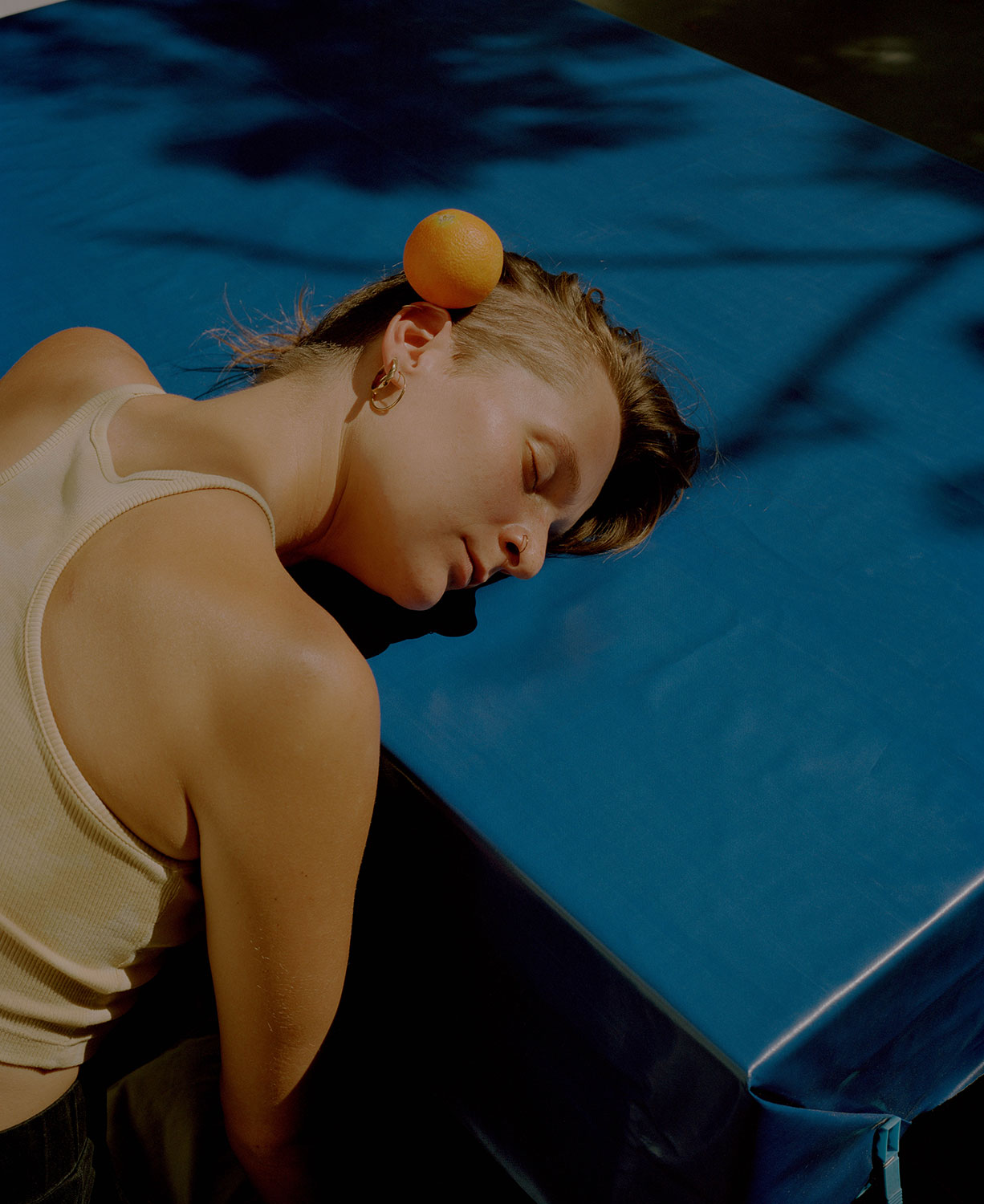
Thinking nothing, feeling nothing, seeing nothing - the idea of nothing-
ness has a long history as a concept of negation in language, an abstract
school of thought in philosophy, and a creative act in art. Logical thinking
becomes entangled in paradoxes. At the same time, this contradiction
provides the framework to express a relationship with the world that is
equally defined by opposites. Steven Natusch‘s work reflects the con-
stant process of searching for content and questions the substance of life
and nothingness.
Steven Natusch (born 1993) is a photographer and artist based in Dort-
mund. He is currently studying photography in the Master Photographic
Studies program at the University of Applied Sciences and Arts in Dort-
mund. In his work, Natusch utilizes photographic images as a visually
poetic language that negotiates emotional states, existential questions,
and elemental experiences.
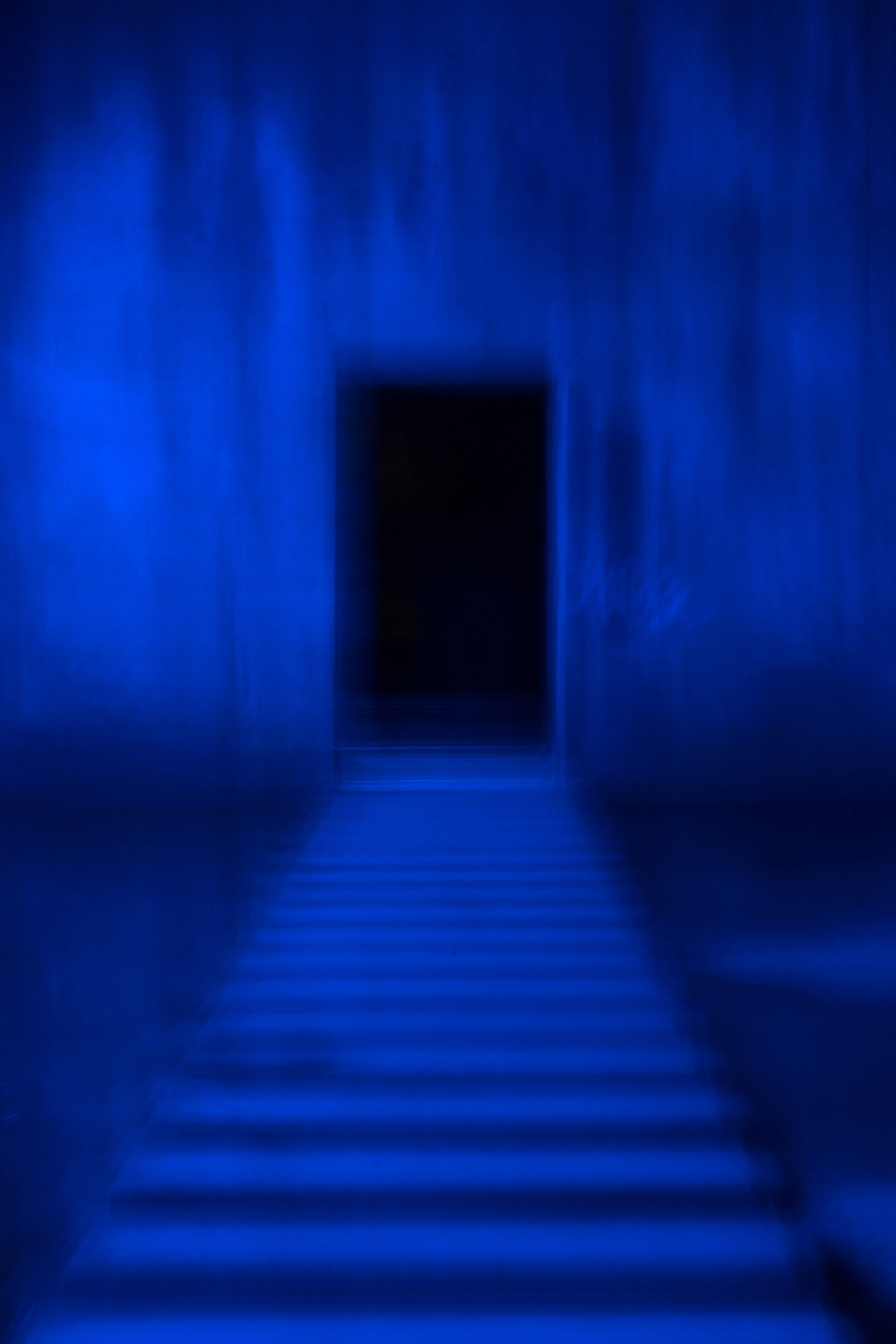
»Indistinct« is an exploration of the impact of auratic photographs on
individuals. The work attempts to approach philosophical statements
through the medium of photography. By physically changing locations,
Mimietz creates an associative visual realm where Flusser‘s „movement
of doubt“ is visualized.
Kai Mimietz (born 1990) completed his BA in Photography at the Uni-
versity of Applied Sciences and Arts in Dortmund in 2019. Since then, he
has been working as a freelance photographer and has been studying
in the MA Photographic Studies program in Dortmund since 2021. He is
particularly interested in media-theoretical discussions related to Vilém
Flusser and Walter Benjamin, as well as pop-cultural topics, including
sampling and hip-hop culture.
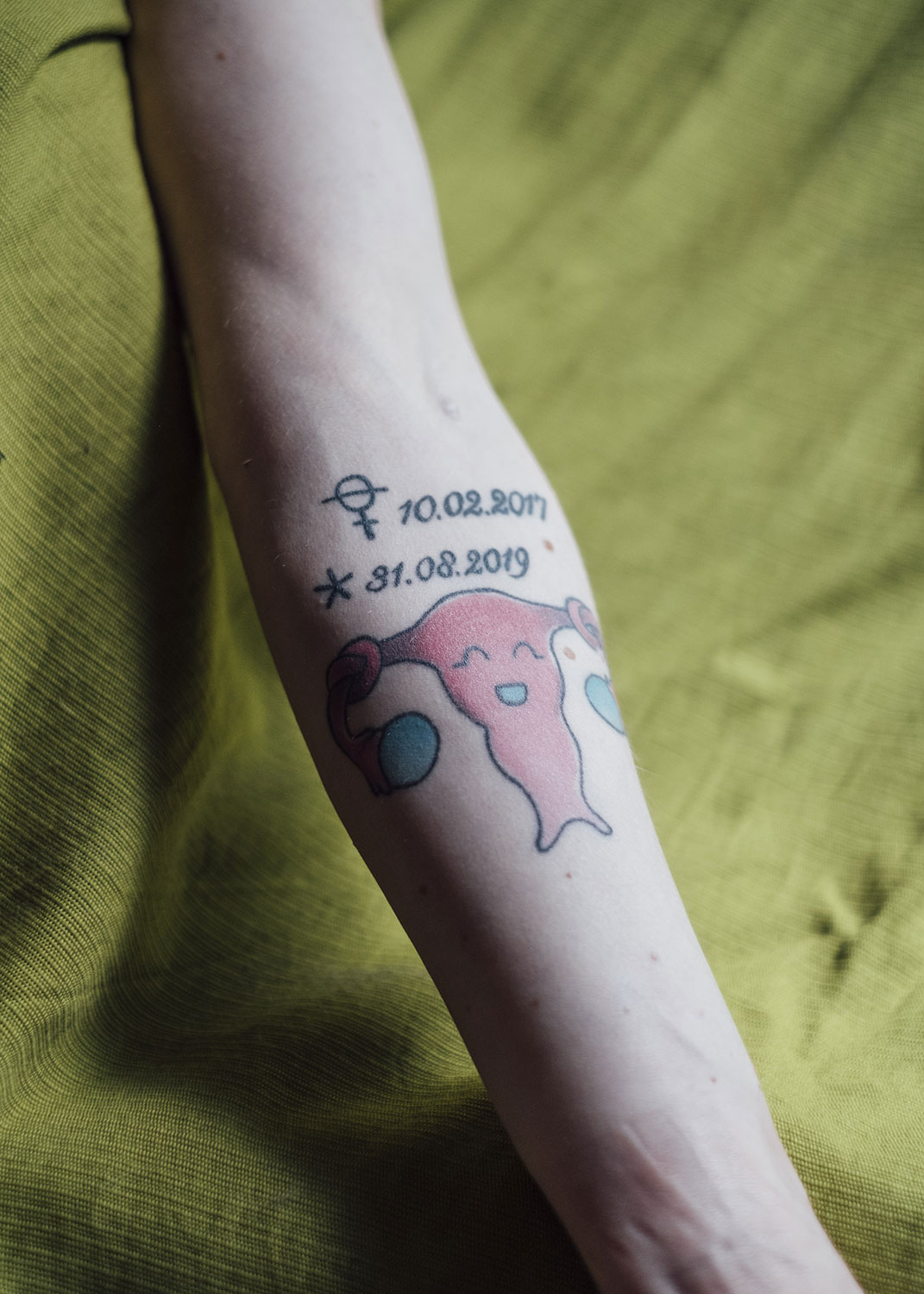
The photographic work »motherhood« is a collection of different perspectives on non-motherhood. Twelve people tell why they do not want to have children of their own. Germany is one of the countries in Europe with one of the highest numbers of childless people. Even though this life model is becoming more and more popular among people, it is still a taboo subject. People who are sure that they want to live a life without children are discriminated against and stigmatized. Above all, childless people with uteruses who want to be sterilized still encounter a lack of understanding from medical staff. They receive no support, are not taken seriously and are often left alone with their wish.